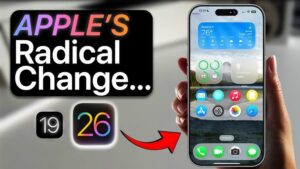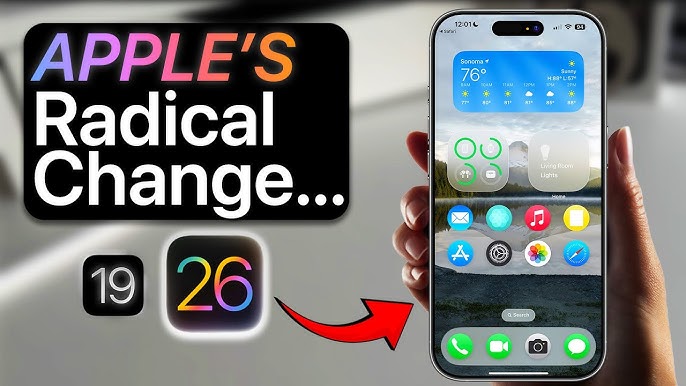|
Getting your Trinity Audio player ready...
|
iOS 19 to iOS 26 at WWDC 2025 — In a move that will redefine how we think about Apple’s software ecosystem, the tech giant is preparing to implement its most significant naming convention overhaul in company history. According to a Bloomberg report from trusted Apple insider Mark Gurman, Apple plans to replace its incremental version numbers with year-based designations starting with its next major software updates.
Decoding Apple’s New Naming Strategy
From iOS 19 to iOS 26: Understanding the Math
Apple’s new approach mirrors automotive industry practices, where model years often reflect the year ahead:
- Software releasing in 2025 will carry the “26” designation
- Future updates will increment annually (iOS 27 in 2026, etc.)
- Affects all platforms: iPadOS, macOS, watchOS, tvOS, and visionOS
Why the Dramatic Jump?
The current numbering system has become increasingly inconsistent:
- iOS 18 (iPhone)
- watchOS 12 (Apple Watch)
- visionOS 2 (Vision Pro)
- macOS 15 (Mac)
This fragmentation creates confusion, especially as Apple pushes for deeper ecosystem integration.
WWDC 2025: Where the Future Becomes Clear
June 9 Keynote Expectations
Apple will officially unveil the changes during its Worldwide Developers Conference keynote at 1PM ET on June 9. The event is expected to showcase:
- The new year-based naming convention
- A visionOS-inspired design overhaul across all platforms
- Potential UI unification efforts
Design Revolution in the Making
Early reports suggest the update will bring:
✔ More rounded, bubbly app icons
✔ Enhanced cross-device consistency
✔ Possible Mac-like multitasking for iPad
Industry Context: Following the Automotive Playbook
Precedent in Tech and Auto Sectors
Apple isn’t the first to adopt this approach:
- Samsung shifted to year-based naming with Galaxy S20 in 2020
- Automakers routinely use model years ahead of actual release
- Microsoft employed similar tactics with Windows 95/98
Expert Perspectives
“Year-based naming provides clearer context about software generation,” notes Techsponential analyst Avi Greengart. “For Apple’s increasingly complex ecosystem, this could help users better understand compatibility and features.”
What This Means for Apple Users
Potential Benefits
✅ Simpler version tracking across devices
✅ Clearer update roadmap with annual increments
✅ More unified ecosystem experience
Possible Challenges
⚠ Initial confusion during transition period
⚠ Potential feature expectations mismatch (year-ahead naming)
⚠ Learning curve for redesigned interfaces
Looking Ahead: The Future of Apple Software
This strategic shift signals Apple’s commitment to:
✔ Long-term ecosystem cohesion
✔ Annual update cycles similar to hardware releases
✔ Vision Pro-inspired design language across all products
Final Thoughts: A Bold Step Toward Software Clarity
Apple’s move to year-based software naming represents more than just version number changes—it’s a fundamental rethinking of how the company presents its software evolution. By aligning with automotive-style naming conventions and unifying its design language, Apple aims to create a more intuitive, cohesive experience across its entire product lineup.
As we count down to WWDC 2025, one thing is certain: the Apple software landscape is about to undergo its most significant transformation in years. Whether this bold strategy will resonate with users remains to be seen, but it undoubtedly marks a new chapter in Apple’s software story.



